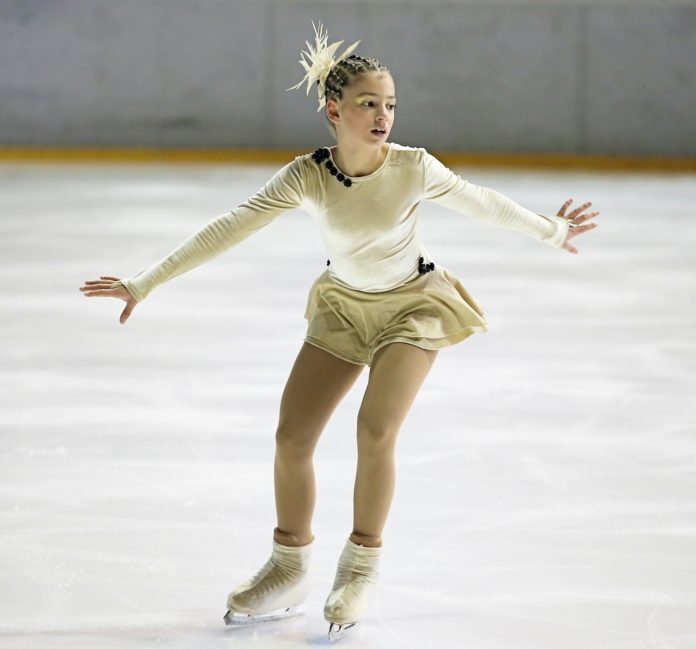If your local gym and home exercise equipment fails to get you up for a workout, then it might be time to consider a new type of exercise: ice skating.
As an excellent aerobic exercise, ice skating can keep your heart rate up and ensure that your heart and lungs are healthy. It also helps boost energy and make you feel more alert by keeping your mind free of distractions.
It is also known for its benefits for a person’s psychological well-being. It enables you to focus on your surroundings rather than things that cause stress.
The best part is ice skating is also a great way to manage your weight. If you’re trying to lose weight, combining this sport with a well-balanced diet might help you burn as much as 200 calories for only 30 minutes of skating, according to Harvard Medical School.
Despite its numerous benefits, many people still hesitate to try this awesome sport, mainly because they think that it would be too hard to balance on the ice wearing ice skates with razor-thin metal blades. To help you get over the fear, here are nine simple tips that can make learning how to ice skate easier:
1. Wear the Proper Attire.
Whether on a rink or a frozen lake, learning how to ice skate means you have to be in a cold environment. So, remember to keep warm before you engage in the sport.
But instead of wearing a few thick pieces, you should dress in layers so you can remove some of your clothing as your body warms up during the activity.
Stretchy fitted tops and pants are ideal as they promote unhindered movement. You should also replace cotton socks with microfiber that wick moisture ones to reduce the risk of blisters. Wearing gloves is also recommended for added warmth and protection for your hands in case you fall.
While protective equipment may not seem fashionable, they are essential as you learn to skate so that you can stay safe and continue with the activity even after a fall. Wear knee, elbow, hip, and wrist guards to secure the joints reduces the risk of injuries. A helmet does the same for your head.
2. Considering Renting Ice Skates First
Aside from your attire, you should also think about the gear you would need for the sport: ice skates.
If you’re just starting to learn how to skate, it would be best to rent a pair to use in the meantime. This way, you can assess whether you’ll grow fond of the sport before you invest in ice skates.
As you practice skating on the ice, you’ll eventually have to decide whether you love the sport enough to buy your own skates. When this time comes, remember to pick a decent pair that’s not only durable but will also provide excellent support. Having your own skates will be overall more comfortable as they form to your feet.
Remember that ice skates don’t follow the same sizes as your regular shoes. It should fit your feet well, so you’ll have to try it out first to make sure that the heels are snug against the back of the skates and that you have enough wiggle room for your toes.
It would also be best to seek advice from reputable skating instructors to determine what type of skates will work for you.
3. Learn How to Tie Skates Properly
Tying skates are crucial for your safety. Don’t tie them too tightly, else your feet would go numb. Tying too loosely is also a big no-no as it increases the risk of your losing balance since the skates can’t provide ample support for your ankles.
4. Do Gradual Warm-Ups
Warming up is an essential practice before you engage in any form of exercise. For ice skating, your muscles need to “thaw” first since you’ll be working out in a cold environment. This means you shouldn’t start stretching the moment you arrive to on the ice, as doing so could damage muscle tissues.
Instead, you should keep your warm clothes on while bending and stretching outside the ice. As your body temperature gradually increases, you can proceed on the ice and continue your warm up there.
5. Don’t Look Down When You Start Skating
One of the most common mistakes first-time ice skaters make is looking down while accelerating. Like learning how to ride a bike, ice skating is all about maintaining focus on the direction you’re going. So, unless you want to risk bumping into something or someone, keep your head up as you skate on the ice.
6. Learn How to Break Your Fall
Whether you like it or not, you’ll fall a couple of times as you learn how to ice skate. This is perfectly normal.
You can avoid major injuries by learning how to break your fall. Keep these tips in mind:
- First, you must relax as you go down so you’re landing won’t be too stiff.
- Then, protect your joints (elbows, wrists, hips, and knees) as you drop. It would be best to fall on your bum since it’s the least likely to get injured.
- Keep your head protected, another good reason to wear a helmet.
- When using your hands to resume a standing position, remember to clench your fist to protect your fingers.
Don’t forget to maneuver with the help of both knees, balance on one, and push yourself up from the raised knee.
7. Practice Stopping ASAP
Learning how to stop is as important as knowing how to propel yourself on the ice. There are two ways to do this:
Snowplow Stop
The snowplow stop entails pushing your skates apart. This will get you into a pigeon-toed position. Using the inner part of the blades, start shaving the ice to slow down your momentum until you get to a full stop. It is the most basic of stops.
T-Stop
When doing the T-stop, you should drag one skate behind the other to form a 45-degree angle.
Of course, you can also practice that fall if you need to.
8. Skate in the Correct Direction
When ice skating, you probably think you can just go whichever direction you start off to. However, there’s a directional rule that most ice skaters follow on the ice to avoid bumping into each other. This means that, if the other people on the rink or frozen lake are headed in a clockwise or counter-clockwise direction, you should follow suit.
9. Use Your Shoulders to Steer
Now that you know that you’ll have to follow the flow of other skaters on the rink, you’re probably wondering what you can do to steer yourself in the right direction. Although this may seem complicated, it is actually quite simple: you only need to turn your outer shoulder – the one furthest from the direction you plan to turn – forward to proceed on a graceful arc.
Learn to Ice Skate Today
Learning how to skate on the ice is not as difficult as you might think. Follow the tips listed in this article, and you’re off to a good start. To ensure that you learn everything there is to know about ice skating, consider learning from sports schools with the necessary facilities.
AUTHOR BIO
Possessing more than two decades of experience in the leisure and hospitality industry, Tony Kouris joined Zayed Sports City as General Manager in January 2018. With extensive career experience, a value on interpersonal relationships, and strong negotiating experience, he is positioned to support Zayed Sports City’s strategic growth and continue to innovate the site as an internationally recognised sport and entertainment destination.
















